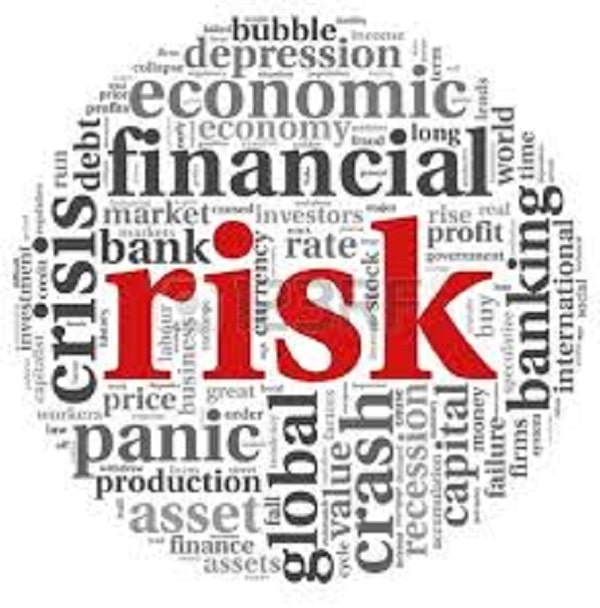Senior management views risk from two different angles. Finding the ideal ratio of risk to profit is the objective, according to the classic enterprise risk management (ERM) perspective. The organization will occasionally take on greater risk in exchange for the possibility of expanding more quickly, and other times the emphasis is on risk management with slower expansion. Organizational protection is the main goal of the operational risk management (ORM) perspective, which is more risk-averse. This blog post provides a thorough description of operational risk management within the Navy framework, along with the ORM process steps and examples.
What is Operational Risk Management?
Operational risk is the possibility of suffering a financial loss as a result of internal systems, personnel, processes, or other failures that could impair daily corporate operations. Losses may be incurred financially, either directly or indirectly. For instance, a poorly trained person may miss out on a sales opportunity, or, more subtly, poor customer service may damage a company’s reputation. Operational risk can refer to both the risk of running a business and the processes management uses when putting policies into effect, informing policyholders of them, and enforcing them.
Operational Risk History
The process of assessing internal controls and hazards has become increasingly standardized over the past 20 years. Government authorities, credit rating agencies, stock exchanges, and institutional investor groups demanded increased degrees of confidence about risks and the efficacy of procedures in place to minimize them, which led to standardization.
Due to financial crimes at WorldCom and Enron, the Sarbanes-Oxley Compliance Act of 2002 and the release of COSO’s Internal Control-Integrated Framework in 1992 have raised pressure on firms to have an efficient operational risk management discipline in place. The audit committee in the US exerts the most pressure on senior executives to get more involved in risk oversight.
A framework for enterprise risk management was recently published by COSO. Risk managers have switched to an operational risk management process after using the frameworks for a while.
Operational Risk Management Framework
An operational risk management framework (ORMF) main goal is to identify, evaluate, monitor, and report any risks that a company may be currently or potentially exposed to. If the framework is to be considered “embedded,” it must be coherent, regularly used, and integrated with business operations to be effective.
There is relevant documentation, such as a risk strategy, a risk appetite statement, rules, and procedures, which serves as proof that many firms have built a framework for operational risk management that is suitable for its intended use. To raise awareness and comprehension across all of their business lines and operations, they have taken steps to put these into action by distributing communications and training materials.
Then comes “embedding,” which might be the greatest obstacle of all. This will make sure that risk management information and considerations are influencing business actions and choices, demonstrating the framework’s integration and alignment with business processes.
The framework may pose a problem as a result of its lengthy development process or the fact that its component elements were created separately. In larger businesses, the framework may be handled by various business units, and the outputs may be overseen by various teams in central functions.
The goal is to create an operational risk management framework that is fully integrated and embedded and provides the business with both financial and non-financial benefits. Additionally, it will offer a solid foundation for proving the effectiveness of operational risk management initiatives.
Operational Risk Management Process Steps
Although there are various variations of the ORM process steps, the standard application is a five-step process. All five of the steps must be followed because they are essential.
Step 1: Identifying the Risk
To be controlled, risks must be identified. Understanding the objectives of the organization is the first step in risk identification. Anything that keeps the organization from achieving its goals is a risk.
Step 2: Risk Evaluation
Risk evaluation is a methodical process for classifying risks according to likelihood and impact. A prioritized list of known risks is the result of the risk assessment. The process of risk assessment may resemble the risk assessment carried out by an internal audit.
Step 3: Risk Mitigation
The decision-making process for specialized risk control is part of the risk mitigation step. Transfer, avoidance, acceptance, and control are the four choices for risk mitigation in the operational risk management process.
Step 4: Implementing Control
The decision-making process for risk mitigation is followed by implementation. The controls were created expressly to address the danger posed. For the controls to be understood and carried out, the rationale, purpose, and action must be precisely documented. The controls put in place should prioritize preventive control measures over regulations.
Step 5: Observation
The controls should be monitored because they could be carried out by error-prone individuals or in a shifting environment. Testing the control’s appropriateness in terms of its design, implementation, and operational efficacy is known as “control monitoring.” Any difficulties or exceptions should be brought up with management, and action plans should be made.
Operational Risk Examples
Every organization and every internal process is impacted by operational risk. The purpose of the operational risk management role is to identify risks that have the greatest potential to affect the business and to hold those responsible for managing operational risk accountable.
Operational risk management examples include:
- Employee behavior and employee mistakes
- Private data breaches brought on by cybersecurity attacks
- Automation, robotics, and artificial intelligence-related technology hazards
- Business controls and processes
- Physical occurrences like natural disasters that might impair a business
- Fraud both internally and externally
The process of addressing the risks connected to military operations, including risk assessment, risk decision-making, and the deployment of efficient risk controls, is known as operational risk management in the Navy.
Operational risk management in the Navy is most commonly understood to be a straightforward, five-step process that is used during planning or at the deliberate level. These are the five steps:
- Recognize risks – A risk is any circumstance that could impair mission performance or result in injury, death, or property damage. The entire RM process is built on hazard identification. A hazard cannot be controlled if it is not recognized.
- Assess the hazards – Determine the associated degree of risk in terms of likelihood and severity for each hazard that has been identified. A prioritized list of hazards is produced as a result of the risk assessment, ensuring that controls are first identified for the biggest threat to completing the mission or job.
- Make risk decisions – Determining whether the risk is acceptable is a crucial component of the risk decision. The person who can weigh the danger against the mission’s or task’s possible value and benefits must make this choice at the appropriate level. This person decides whether the controls are adequate and acceptable as well as whether to accept the resulting residual risk.
- Control implementation – once risk control decisions have been established, the next step is implementation. To do this, it is vital to establish accountability, properly communicate the plan to all parties involved, and give the required assistance.
- Supervise – Determine the efficacy of risk controls throughout the mission or task when you supervise and review. This entails three steps: tracking the efficiency of risk controls; identifying the need for additional assessment of the entire mission or task owing to an unanticipated change; and recording both positive and negative lessons learned.
- Take chances, When the benefits outweigh the costs
- Don’t take any unnecessary risks.
- Plan to anticipate and mitigate risk.
- Make hazardous choices when they are appropriate.
#1. In-Depth
The in-depth level refers to circumstances where there is no time constraint and the correct response is necessary for a mission or assignment to be successful. At this level, several tools are employed, including thorough investigation and analysis of the available data, the use of diagrams and analysis tools, formal testing, or long-term monitoring of related dangers. In-depth planning of complex or emergency operations, the use of technical standards and system hazard management in engineering design, and the purchase and introduction of new tools and systems are more examples of how ORM is implemented.
#2. Deliberate
The deliberate level describes circumstances where there is enough time to use the RM process to plan a mission or assignment in depth. Planning at this level is best done in a group and largely involves experienced employees and brainstorming. A nice illustration of ORM application integrated at the purposeful level is the Navy planning process.
#3. Time Critical Risk Management (TCRM)
This is the level at which employees regularly conduct themselves, both on and off the clock. It is ideal to think of the time-critical level as occurring at the outset or during a mission or activity. There is little to no time to establish a plan at this level. The greatest one may hope for is a quick mental or vocal evaluation of the brand-new, altered, or shifting circumstance.
Why is Operational Risk Management Important?
Operational risk management is crucial to a company’s performance. A technique or process that allows for the assessment of risks and their mitigation helps the business avoid costs, delays, and difficulties. The advantages of operational risk management are as follows:
#1. Enhances decision-making processes
Effective risk identification and assessment enable managers to develop more effective project completion methods. You can decide how to continue and minimize risks by being aware of any potential risks associated with a process. For instance, a cyberattack could be a potential operational risk.
#2. Aids in identifying risky situations or actions
Operational risk management assists in identifying working environments that might be hazardous or hiring procedures that might lead to mistakes. Before starting operations, it’s crucial to be aware of these dangers to avoid harming or injuring staff members or corporate property.
#3. Produce superior products
Businesses can produce more consistent products if they adhere to regulations and reduce any risks associated with product creation. Because of its constancy, the business is dependable and may attract more customers. Once a process can consistently generate high-quality goods, a company may decide to tweak its steps to enhance the final result.
#4. Increases openness between managers and staff
Executives and staff can more effectively convey their needs and requests to one another thanks to a process like operational risk management. Executives running their companies must adhere to regulations and minimize operational risks that incur expenditures.
#5. Offer effective financial forecasting.
Since operational risks frequently result in financial losses, being able to recognize these risks aids in effective financial forecasting. Financial specialists might update their predictions when they are aware that the organization is avoiding these losses. Better financial forecasting is advantageous since it enables a corporation to make other financial decisions, such as setting a budget and choosing investments.
How to Implement Operational Risk Management
Implementing a successful operational risk management process boosts a company’s profits and contributes to the production of higher-quality goods. Learning how to create this process and teaching staff members how to apply it could increase both employee and corporate success. Here are the first five steps to operational risk management implementation:
#1. Identify dangers.
The first stage of operational risk management is to determine what might go wrong during a project or process. You can create a framework for controlling risks by categorizing the company’s policies and procedures to increase your capacity to see potential problems.
#2. Analyze the potential impact of hazards on corporate operations.
It’s crucial to examine and forecast how prospective hazards can impact corporate operations after they have been identified. As part of the operational risk management process, it is important to determine how likely a risk is to materialize as well as its potential severity.
#3. Create a scale to evaluate hazards.
The first step in reducing hazards is to measure them. You could use a scale to quantify the risk when evaluating it. The most significant threats are prioritized and dealt with on this scale. Utilizing a scale like this can help you lessen the harm that risks could do to your efforts.
#4. Appoint team members to keep an eye on risks.
Another phase of operational risk management is risk monitoring. Establishing a team of workers to keep an eye on the hazards you’ve identified is an excellent idea. This group can continue to assess risks and track the likelihood that they will materialize. One team can concentrate on this, freeing up others to work on production-related duties. The monitoring team can also create plans for risk prevention and problem-solving related to potential risks.
#5. Plan your approach to avoiding probable risks.
Create a plan to avoid or reduce the risks you find to maximize the effectiveness of operational risk management. A risk management strategy may include techniques for isolating and removing risks from projects or processes. This strategy can be created by the monitoring team, which can also put it into practice by taking steps to lessen the risk.
What are the 4 main types of operational risk?
Operational risk can be divided into five different categories: legal and compliance risk, process risk, people risk, and systems risk.
How do you mitigate operational risks?
Four concepts serve as the foundation for the operational risk management process.
- Don’t take any unnecessary risks.
- When the rewards outweigh the costs, accept the risk.
- Adapt your risk-taking decisions to the situation.
- Plan to anticipate and mitigate risk.
Who is responsible for operational risk?
Operational risk must be handled by the board and senior management, with the help of safeguards put in place by the policies, frameworks, processes, and procedures they decide upon.
What are the 5 pillars of operational risk?
Five pillars make up the operational risk process:
- Risk appetite.
- Risk evaluation.
- Identification of risks.
- Risk mitigation.
- Risk monitoring
What is the difference between strategic risk and operational risk?
Operational risks and strategic risks are two different categories. Operational risks are just the result of internal company operations, while strategic risks come from both internal and external causes. and they could interfere with employment.
Related Articles
- INTERNAL CONTROLS: Meaning and Examples
- OPERATIONAL GOALS: Steps In Setting Realistic Goals +Examples
- PROJECT RISK MANAGEMENT: Step-By-Step Guide On How To Manage Risks
- OPERATIONS MANAGEMENT: Definition, Types, and Best Practices






